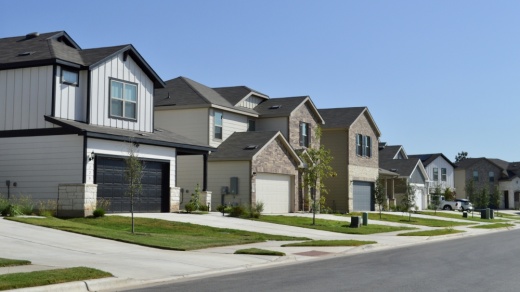Lankford said these increases—which could be as high as 40% in some neighborhoods—are directly tied to the housing market. Residents should receive their appraisals, which aim to show a home’s value as of Jan. 1, via mail by early April.
“What people don’t realize is that we are a mere reflection of the market sales transactions that happen in Williamson County,” Lankford said. “Our job is to appraise at the market level that we are seeing.”
Williamson County real estate professionals said these property value increases are not surprising given current real estate conditions—low inventory coupled with a high demand for houses have continued to drive prices up.
“The concern we have as Realtors is if we continue to have a low number of new active listings, but also increasing demand, then we are going to see steep increases again in valuations,” said Realtor Drew Griffin, who works primarily in Northwest Austin, Lakeway, Round Rock, Cedar Park and Georgetown.
In January, the median price of a home sold in Williamson County was $460,000, up 42.53% from the median sales price in January 2021, according to data from the Austin Board of Realtors.
These steep increases in home sales prices and, subsequently, property values could affect homeowners’ property taxes for the coming year, experts said. However, Lankford said the increase in what a person owes in property taxes is unlikely to be proportional to the increase in home value due to the homestead exemption and caps on how much revenue a taxing entity can make from property taxes in a year.
Residential ramifications
Lankford said property valuations increased between 6%-10% in Williamson County for about a decade prior to 2021. Then, in 2021, home values rose 17% on average—the largest increase to date—Lankford said.
“We saw a pretty significant increase for 2020 into 2021, and we’ve seen a much larger increase—doubling that—from 2021 to 2022,” Lankford said. “It’s unprecedented, to say the least.”
Despite increases in property tax appraisals expected to rise by 40% in some areas, the homestead exemption caps the amount a property’s taxable value can increase in a year at 10%, according to the WCAD. To qualify for the homestead exemption, the property must be a person’s primary place of residency, according to the Texas comptroller.
Additionally, property values are only one factor in the tax formula. The other is property tax rates, which are set by taxing entities, including school districts, cities and counties, during their annual budgeting process.
A 2019 Texas law capped the revenue counties and cities can make from property tax increases to 3.5% without needing voter approval, according to the Texas Association of Counties. A 2.5% cap was also implemented for school districts.
Therefore, Lankford said if the taxable value of homes in a jurisdiction increases by 10%, the property tax rate will have to decrease so that total revenue does not exceed these limits.
Despite these caps, Griffin said 10% increases in the taxable value of a property adds up over time.
ABoR President Cord Shiflet said tax rates and potential property tax bill payments are something buyers are taking into account when deciding where and whether they are able to purchase a home.
“Added expenses of property taxes can price someone out of an area,” Shiflet said in an email. “It is important to work with a Realtor that can help you understand that your housing payment isn’t just principle and interest; it’s those things plus insurance, taxes, potentially mortgage insurance, any [HOA] fees and more.”
Market conditions
Williamson County has seen an influx of technology jobs, with Apple planning to move the first phase of employees into its new $1 billion campus in 2022 and Samsung announcing a $17 billion facility in eastern Williamson County.Additionally, Realtor Kiersty Lombar said demand for houses in Williamson County has also been driven by the relative affordability of the county compared to neighboring Travis County, which saw median home sales prices of $530,000 in January, according to ABoR data.“The location is terrific being that Austin is right next to Williamson County and it has been such an epicenter of growth over the last decade,” Lombar said.
Housing inventory levels have also been at record lows. In January, Williamson County had 0.3 months of housing inventory, according to ABoR data. According to the Texas A&M Real Estate Research Center, six months of inventory is considered a balanced housing market.
Todd LaRue, a development consultant, said despite rising costs on their end, developers are continuing to pursue housing projects in the county.
“Williamson County is a pro-business, pro-growth county,” LaRue said. “There is quite a bit of high-quality community development in the pipeline.”





